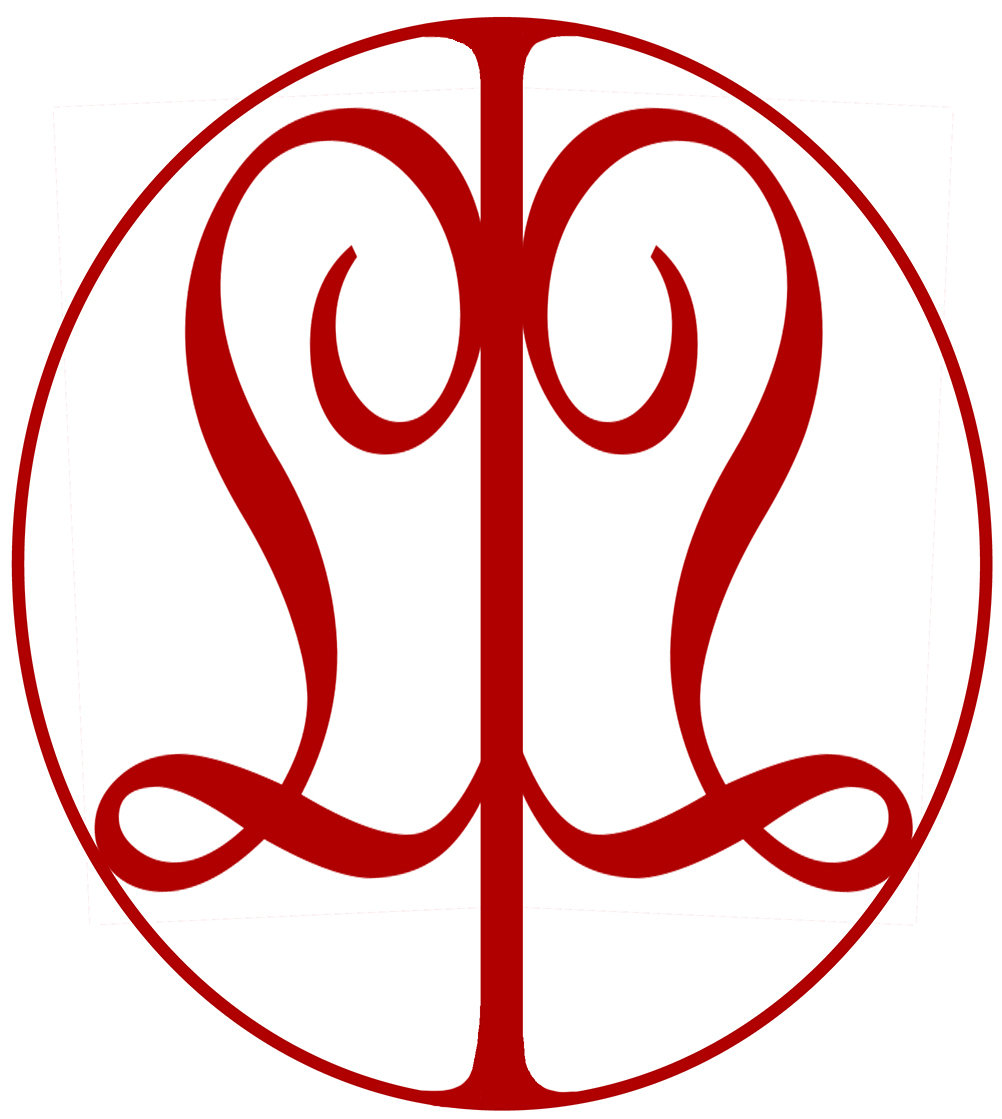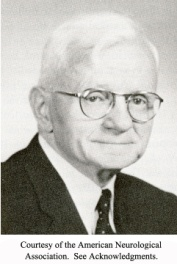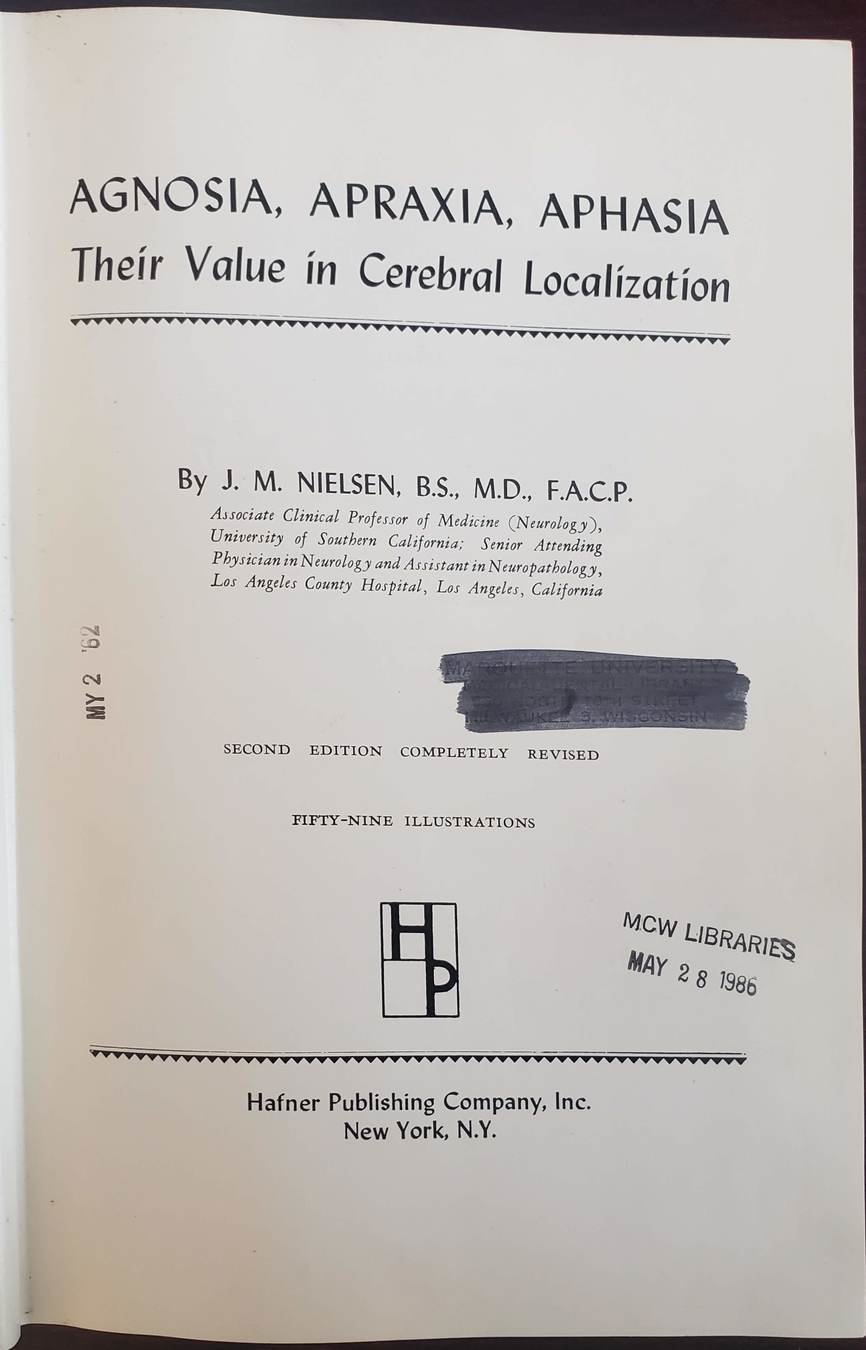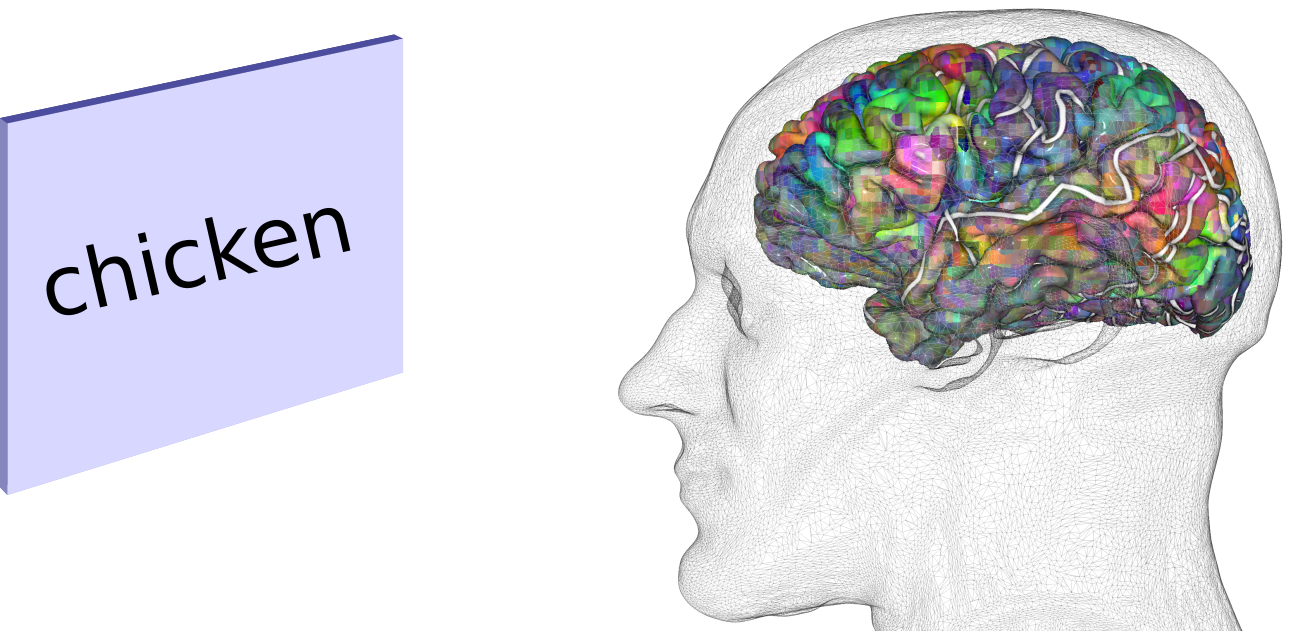The Cortical Representation of Body Part Concepts
Stephen Mazurchuk
10/28/21
A plug
Language Imaging Laboratory

Central Question:
What are the neural substrates that support concept representation?
Why?
- In general, there are many parts of the cortex that might be lesioned, and we want to be able to know what functions are supported by different regions
Why should something like word meaning be localizable in the cortex?
A Case
Case
- 66 y/o man with severe Broca's aphasia
- MRI shows haemorrhagic infarcts in ithe left angular gyrus, posterior end of the left STG, and lateral part of the left frontal lobe
- On exam, alert and cooperative
- Comprehension of spoken speech was judged to be good
- Showed a consistent and striking disability in pointing to 'body parts'

Case
- 66 y/o man with severe Broca's aphasia
- MRI shows haemorrhagic infarcts in ithe left angular gyrus, posterior end of the left STG, and lateral part of the left frontal lobe
- On exam, alert and cooperative
- Comprehension of spoken speech was judged to be good
- Showed a consistent and striking disability in pointing to 'body parts'
Testing
Point to a corresponding picture among 10 cards belonging to the same category from either auditory or visual presentation of a name
Case

Suzuki, K., Yamadori, A. & Fuji, T. Category-specific comprehension deficit restricted to body parts. Neurocase 3, 193–200 (1997)
Category Specific Semantic Deficits
- A brief history
- Experiential models
- RSA
- Decoding Analysis
- Encoding Analysis
- ROI Specificity
- Clinical Correlates
- Closing Thoughts
Talk Outline
Earliest Reference
"These three cases then suggest that animate objects may be recognized and revisualized by the left occipital lobe while the same functions for inanimate objects proceed through functional activity of the right lobe"


* 2nd revised edition, 1940














- Many proposed category distinctions
- Artifacts, Animals, Tools, Plants/Food, Numerosity, Vehicles, Events, Human Traits
- Sometimes called "natural categories"
- Living/Non-living (Animals and Artifacts) is most widely studied dissociation
Key Point
Few fMRI studies have focused on determining the lexical-semantic neural correlates of body-part knowledge
Body part
Conceptual
Representations
(sometimes termed body-image)
Explain how focal Lesions to the cortex can result in deficits to a particular category of concepts
Goal:
Explain how focal Lesions to the cortex can result in deficits to a particular category of concepts
Goal:
Some areas of the cortex preferentially process certain sensory, motor, affective, and other experiential phenomena
Concepts are composed of sensory, motor, affective, and other experiential content
Conclusion:
1)
2)
"experiential features"
The spatial distribution and disruption of category knowledge is explained by "experiential" accounts of concept representation
Propositions:
(hypothesis)
both primary sensory cortices, but also adjacent association cortices
"Natural categories" of concepts arise from how concepts "cluster" on sensory, motor, and affective dimensions
3)
Explain how focal Lesions to the cortex can result in deficits to a particular category of concepts
Goal:
Some areas of the cortex preferentially process certain sensory, motor, affective, and other experiential phenomena
Concepts are composed of sensory, motor, affective, and other experiential content
Conclusion:
1)
2)
"experiential features"
The spatial distribution and disruption of category knowledge is explained by "experiential" accounts of concept representation
Propositions:
(hypothesis)
both primary sensory cortices, but also adjacent association cortices
"Natural categories" of concepts arise from how concepts "cluster" on sensory, motor, and affective dimensions
3)
Evidence that concepts are experiential
Part I
Neural Representation of Concepts
Model Representation of Concepts
Evidence that concepts are experiential
Part I
Neural Representation of Concepts
Model Representation of Concepts
Concept Representation as Experiential Attributes
CREA


- Participants are asked to rate on a likert scale how important they think a given attribute is to a given concept





Evidence that concepts are experiential
Part I
Neural Representation of Concepts
Model Representation of Concepts
How can fMRI tell us about concept representation?
The tool



Acquisition Parameters
- Images acquired on 3T GE Premier
- T1 MPRAGE and T2 CUBE acquisition (0.8 x 0.8 x 0.8 mm\(^3\)) on each day
- T2*-weighted echoplanar images were obtained using a simultaneous multi-slice sequence
- SMS factor = 4
- TR = 1500 ms, TE = 23 ms, flip angle = 50\(^\circ\)
- 104 x 104 x 72, voxel size = 2 x 2 x 2 mm\(^3\)
- Pairs of SE with opposing PE directions were acquired before run 1, between runs 3 and 4, and after run 6
Study Design
- Words presented visually in a fast event-related design with variable inter-stimulus intervals
- All 300 stimuli presented 6 times in psuedo-random order over three imaging sessions on separate days
- Over 6 hours of scans!
Pre-Processing
- All data processed in a containarized version of fmriprep
- BIDS format
- ANTS used for brain extraction and normalization
- fsrecon all to reconstruct the surface. Then BOLD time series was projected to the surface
- CSF and WM time series extracted
- Feild map estimated with 3dQwarp
1st level Analysis
- Seperate regressor for each word and 3dREMLfit was used to estimate t-maps for each word
- 12 motion regressors and CSF and WM
- Response time z-scored and regressed out
- Regression was performed on the surface time-series data
Surface normalization
Pial Surface Segmentation

Abdomen

Alligator

Ankle

Apathy

Apple

Armpit
Single Word fMRI Activation Patterns
Evidence that concepts are experiential
Part I
Neural Representation of Concepts
Model Representation of Concepts
Representational Similarity Analysis

Suppose we have two models (or representations of the data). How do we compare them?
| Taste | Shape | Color | |
|---|---|---|---|
| Car | 0 | 4.2 | 4.9 |
| Airplane | 0 | 5.1 | 4.3 |
| Chicken | 5.5 | 2.2 | 2.2 |
| Voxel 1 | Voxel 2 | Voxel 3 | Voxel 4 | Voxel 5 | |
|---|---|---|---|---|---|
| Car | .23 | .58 | .49 | .78 | .86 |
| Airplane | .98 | .28 | .34 | .18 | .52 |
| Chicken | .62 | .82 | .91 | .36 | .17 |
Model 2 (Neural Data)
Model 1 (experiential)
Representational Similarity Analysis
How we compare models?
| Taste | Shape | Color | |
|---|---|---|---|
| Car | 0 | 4.2 | 4.9 |
| Airplane | 0 | 5.1 | 4.3 |
| Chicken | 5.5 | 2.2 | 2.2 |
| Taste | Shape | Color | |
|---|---|---|---|
| Car | 0 | 4.2 | 4.9 |
| Airplane | 0 | 5.1 | 4.3 |
| Chicken | 5.5 | 2.2 | 2.2 |
| Car | Airplane | Chicken | |
|---|---|---|---|
| Car | |||
| Airplane | |||
| Chicken |
RSA
How we compare models?
| Taste | Shape | Color | |
|---|---|---|---|
| Car | 0 | 4.2 | 4.9 |
| Airplane | 0 | 5.1 | 4.3 |
| Chicken | 5.5 | 2.2 | 2.2 |
| Taste | Shape | Color | |
|---|---|---|---|
| Car | 0 | 4.2 | 4.9 |
| Airplane | 0 | 5.1 | 4.3 |
| Chicken | 5.5 | 2.2 | 2.2 |
| Car | Airplane | Chicken | |
|---|---|---|---|
| Car | 1 | ||
| Airplane | |||
| Chicken |
RSA
How we compare models?
| Taste | Shape | Color | |
|---|---|---|---|
| Car | 0 | 4.2 | 4.9 |
| Airplane | 0 | 5.1 | 4.3 |
| Chicken | 5.5 | 2.2 | 2.2 |
| Taste | Shape | Color | |
|---|---|---|---|
| Car | 0 | 4.2 | 4.9 |
| Airplane | 0 | 5.1 | 4.3 |
| Chicken | 5.5 | 2.2 | 2.2 |
| Car | Airplane | Chicken | |
|---|---|---|---|
| Car | 1 | .62 | |
| Airplane | |||
| Chicken |
RSA
How we compare models?
| Taste | Shape | Color | |
|---|---|---|---|
| Car | 0 | 4.2 | 4.9 |
| Airplane | 0 | 5.1 | 4.3 |
| Chicken | 5.5 | 2.2 | 2.2 |
| Taste | Shape | Color | |
|---|---|---|---|
| Car | 0 | 4.2 | 4.9 |
| Airplane | 0 | 5.1 | 4.3 |
| Chicken | 5.5 | 2.2 | 2.2 |
| Car | Airplane | Chicken | |
|---|---|---|---|
| Car | 1 | .62 | .1 |
| Airplane | |||
| Chicken |
RSA
How we compare models?
| Taste | Shape | Color | |
|---|---|---|---|
| Car | 0 | 4.2 | 4.9 |
| Airplane | 0 | 5.1 | 4.3 |
| Chicken | 5.5 | 2.2 | 2.2 |
| Taste | Shape | Color | |
|---|---|---|---|
| Car | 0 | 4.2 | 4.9 |
| Airplane | 0 | 5.1 | 4.3 |
| Chicken | 5.5 | 2.2 | 2.2 |
| Car | Airplane | Chicken | |
|---|---|---|---|
| Car | 1 | .62 | .1 |
| Airplane | 1 | .12 | |
| Chicken |
| Taste | Shape | Color | |
|---|---|---|---|
| Car | 0 | 4.2 | 4.9 |
| Airplane | 0 | 5.1 | 4.3 |
| Chicken | 5.5 | 2.2 | 2.2 |
| Taste | Shape | Color | |
|---|---|---|---|
| Car | 0 | 4.2 | 4.9 |
| Airplane | 0 | 5.1 | 4.3 |
| Chicken | 5.5 | 2.2 | 2.2 |
| Car | Airplane | Chicken | |
|---|---|---|---|
| Car | 1 | .62 | .1 |
| Airplane | 1 | .12 | |
| Chicken | 1 |
| Voxel 1 | Voxel 2 | Voxel 3 | Voxel 4 | Voxel 5 | |
|---|---|---|---|---|---|
| Car | .23 | .58 | .49 | .78 | .86 |
| Airplane | .98 | .28 | .34 | .18 | .52 |
| Chicken | .62 | .82 | .91 | .36 | .17 |
| Voxel 1 | Voxel 2 | Voxel 3 | Voxel 4 | Voxel 5 | |
|---|---|---|---|---|---|
| Car | .23 | .58 | .49 | .78 | .86 |
| Airplane | .98 | .28 | .34 | .18 | .52 |
| Chicken | .62 | .82 | .91 | .36 | .17 |
| Car | Airplane | Chicken | |
|---|---|---|---|
| Car | 1 | .42 | .06 |
| Airplane | 1 | .31 | |
| Chicken | 1 |
Called an RDM
Model 1
- Word voxel activation patterns
Model 2
- Word attribute ratings (CREA)

Advice

Banana

Celebration

(actual model has 65 features)
Note:
- Some regions of the cortex have been consistently measured to be involved with language
- We will limit ourselves to only looking at activation patterns from vertices within a liberal estimation of the generally accepted semantic areas



Yeo, T. B. et al. The organization of the human cerebral cortex estimated by intrinsic functional connectivity. J Neurophysiol 106, 1125–1165 (2011).
Result

Result

51,040 data points in each correlation
But, is this a good result?
- Depends if subjects correlate with each other
- Depends on if there are any better models
But, is this a good result?
- Depends if subjects correlate with each other
- Depends on if there are any better models
The (lower) Noise Ceiling
The best that a model could be is given by:
The average correlation of one subject's similarity matrix with the average similarity matrix of all other subjects
Intuition:
- The best possible model to the data is just the average similarity matrix of the subjects
- If subjects don't look like the average of all other subjects, than there is no shared variance!

Lower Noise Ceiling
CREA Correlation
In general, our model explains about 1/2 of all explainable variance
How do other models compare?

Previously Discussed
- Short answer is the experiential model outperforms other models with this metric

Question:
Yes No
Do experiential features correlate with neural activation patterns?
Question:
Yes No
* With a particular focus on the category of body-parts
Do experiential features correlate with neural activation patterns?
Do "natural categories"* emerge from their loadings on different experiential features?
Mean Ratings For Individual Categories
Clustering Analysis of Concepts based on experiential features




Do "natural categories"* emerge from their loadings on different experiential features?
Question:
Yes No
Are there any parts of the cortex where "natural categories"* emerge from the fMRI activation patterns?
* With a particular focus on the category of body-parts
Do experiential features correlate with neural activation patterns?
Part II
Decoding Analysis
Decoding Model
For a patch of cortex, train a linear Support Vector Machine (SVM) to classify a pattern as being a body part or not

Decoding
"If decoding succeeds on the test set, then the region must contain some information about the decoded variable"
Non-bodyparts
\(\psi_2\)
Body parts
\(\psi_1\)

Body Part Searchlight SVM




toggle
FDR p=.005
Do "natural categories"* emerge from their loadings on different experiential features?
Question:
Yes No
Are there any parts of the cortex where "natural categories"* emerge from the fMRI activation patterns?
* With a particular focus on the category of body-parts
Can experiential features predict the fMRI activation patterns in the above region?
Do experiential features correlate with neural activation patterns?
Part III
Encoding Analysis
Explaining the Result
** Important **
The encoding model predicts the distance between activation patterns (RDM) for body parts (test set) without having any body-part words in the training set
Encoding
(Predict activation patterns for body-parts using observed activation patterns for other words)

Decoding
Body parts
Animals
\(\psi_1\)
\(\psi_2\)
Model
Words
Features
Explaining the Result
Model
Words
Features
Encoding
For a given voxel
For word \(i\)

| Car | Airplane | Chicken | |
|---|---|---|---|
| Car | 1 | .62 | .1 |
| Airplane | 1 | .12 | |
| Chicken | 1 |
| Car | Airplane | Chicken | |
|---|---|---|---|
| Car | 1 | .42 | .06 |
| Airplane | 1 | .31 | |
| Chicken | 1 |
Predicted Correlational Structure
Observed Correlational Structure
predicted voxel response
feature \(1\) rating for word \(i\)
BUT ...
BUT ...
- Our model (regressors) is Co-linear
- We have a lot of regressors
Shrinkage!
Ridge Regression
regular least squares
penalization
Need to choose the strength of the regularization parameter (\(\lambda \))
Shrinkage
An important concept in shrinkage is the "effective" degrees of freedom associated with a set of parameters.


Plan: Do PCA to estimate intrinsic dimensionality. Then estimate shrinkage parameter
Result

CREA encoding model

Body part ROI
Encoding Model ROI
FWEP p=.005
Can Other Models account for the activation patterns?
- A very common model used in the literature is called Word2Vec
I bought chicken for dinner
bought chicken dinner
bought pork dinner
bought steak dinner
remove stop words
context words
target word
- Basic premise is that words that appear in similar context's have similar meaning
- Each word is a vector. The dot product of two vectors should reflect how similar the contexts are for those words


*No area survived multiple comparisons correction
W2V Encoding Performance
Do "natural categories"* emerge from their loadings on different experiential features?
Question:
Yes No
Are there any parts of the cortex where "natural categories"* emerge from the fMRI activation patterns?
* With a particular focus on the category of body-parts
Can experiential features predict the fMRI activation patterns in the above region?
While the above region is sensitive to the body-part distinction, is this region specific to body-parts?
Do experiential features correlate with neural activation patterns?
Part IV
ROI Specificity
Is the classification accuracy the same for all categories in the body-part ROI?





Animal
Artifact
Body part
Plant\Food














- As compared to Animals and Artifacts, body parts appear to have a somewhat specific representation in this ROI

Do "natural categories"* emerge from their loadings on different experiential features?
Question:
Yes No
Are there any parts of the cortex where "natural categories"* emerge from the fMRI activation patterns?
* With a particular focus on the category of body-parts
Can experiential features predict the fMRI activation patterns in the above region?
While the above region is sensitive to the body-part distinction, is this region specific to body-parts?
Is there clinical/previous evidence to corroborate these results?
Do experiential features correlate with neural activation patterns?
Clinical Correlates
Part VI
Bodypart assessment
- Developed two tests to assess the lexical-semantic representation of body
- point to body part most similar in function to target body part
- point to body part most closely associate with a pictures item (clothing / tool)
- Administered to 70 stroke patients
- 3 had selective body-image impairment



Schwoebel, J. & Coslett, H. B. Evidence for Multiple, Distinct Representations of the Human Body. J Cognitive Neurosci 17, 543–553 (2005)
Finding
All three subjects with body image lesions had suffered temporal lesions; as shown in Figure 2, the lesion involved portions of Brodmann's area 37 as well as underlying white matter in 2 subjects

BA 37
Peak BP Area
Deeper Neuropsychological Investigation
- Battery of 12 tests assessing lexical and conceptual aspects of body part knowledge to 104 brain-damaged patients
- Main finding was remarkably intact semantic understanding
- 10 had impaired production, only 1 patient with impaired composite comprehension index
In the 9 patients with body part anomia, oral naming of concrete entities was evaluated, and this revealed that 4 patients had disproportionately worse naming of body parts relative to other types of concrete entities

Kemmerer, D. & Tranel, D. Searching for the elusive neural substrates of body part terms: A neuropsychological study. Cognitive Neuropsych 25, 601–629 (2008)
Caveat
- In the composite comprehension index, only one patient had an impaired score, and that happened to be the one with the EBA lesion
- None had impaired understanding of the "meanings" of body part terms
- Most errors were paraphasias or omissions
lexical verses conceptual deficits
Of 12 tests, 4 required production of terms, and 7 required comprehension of terms


Goldstein, E. B. & Brockmole, J. Sensation and Perception. (Cengage Learning, n.d.)
Previous fMRI Result
- 16 subjects, 4 semantic categories
- Task was within group similarity comparison
- Found body and clothing activated BA 37


Do "natural categories"* emerge from their loadings on different experiential features?
Question:
Yes No
Are there any parts of the cortex where "natural categories"* emerge from the fMRI activation patterns?
* With a particular focus on the category of body-parts
Can experiential features predict the fMRI activation patterns in the above region?
While the above region is sensitive to the body-part distinction, is this region specific to body-parts?
Is there clinical/previous evidence to corroborate these results?
Do experiential features correlate with neural activation patterns?
Closing Thoughts
Closing Thoughts
- Indication that left pMTG might play an important role in lexical-semantic representations of body parts
- Evidence that experiential accounts explain fMRI activation patterns
Future Directions
- Determine the experiential features most important for explaining the neural data
- Repeat similar analysis for other categories
- Examine the less significant ROI's for the body-part category
Takeaway:
Decent evidence that the activation patterns within the brains "conceptual system" are somewhat explained by the sensory-motor (experiential) features being processed

MSTP:
Joseph Barbieri, PhD
Calvin Williams, MD, PhD
Nita Salzman, MD, PhD
Gil White, MD
Sid Rao, MD, PhD
Language Lab:
Jia-Qing Tong
Jeffrey Binder, MD
Leonardo Fernandino, PhD
Lisa Conant, PhD
Songhee Kim, PhD
Alex Helfand, PhD
Ann Moll
Kim Peplinksi
Joe Heffernan, MS
Jed Mathis
Samantha Drane
Belle Banke
Thank You!
Questions?
EXTRA SLIDES





Shrinkage
W2V Shrinkage


Extra:
- Similar question to doing RSA overall.
- The multivariate second moment of the activity profiles fully defines the representational geometry and with it all the information that can nbe linearly or nonlinearly decoded
- If the the noise is assumed gaussian, than the second moment also determines SNR
- It doesn't depend on getting single neurons right, but rather, capturing the population code
Why do RSA with the encoding model?
Word List
| Body-Parts | |
|---|---|
| instep | spine |
| eyebrow | muscle |
| pancreas | waist |
| leg | cheek |
| trachea | skeleton |
| abdomen | liver |
| ligament | cartilage |
| clavicle | knuckle |
| kidney | navel |
| testicle | thumb |
| forearm | eyelid |
| nipple | elbow |
| stomach | diaphragm |
| finger | shoulder |
| beard | tooth |
| skull | wrist |
| nostril | pelvis |
| torso | intestines |
| heel | armpit |
| toenail | belly |
| earlobe | bladder |
| retina | ankle |
| thigh | mustache |
| fingernail | nose |
| lip | forehead |
Encoding Model
- For each voxel, the activation is predicted by the mean rating for the word
- We then compare the relationships between the predicted activation patterns to the observed activation patterns.
Case
- 64 y/o man, gradual onset of a right hemiparesis
- Alert cooperative man, fully oriented for place and person, but mildly disoriented for time.
- Agraphia, but no reading deficit.
Called Autotopagnosia
- Could not point to named body parts (on himself or manikin)
- No errors in naming body part pointed to by the examiner
- The patient was amazed by this discrepancy.
- Was able to describe function of body parts
- Conversational speech was fluent and appropriate

Renzi, E. D. & Scotti, G. Autotopagnosia: Fiction or Reality?: Report of a Case. Arch Neurol-chicago 23, 221–227 (1970)
Where is there shared variance in activation patterns?
- A "semantic model" would be unable to explain:
- Noise inherent to measurement
- "Unique" representational content
Body part
Conceptual
Representations
sometimes termed body-image
Tasks were:
- Point to body part most similar in function to target body part
- Body part most associated with clothing or tool
Biophysics Seminar
By smazurchuk
Biophysics Seminar
This is the presentation I gave for RIP
- 161



